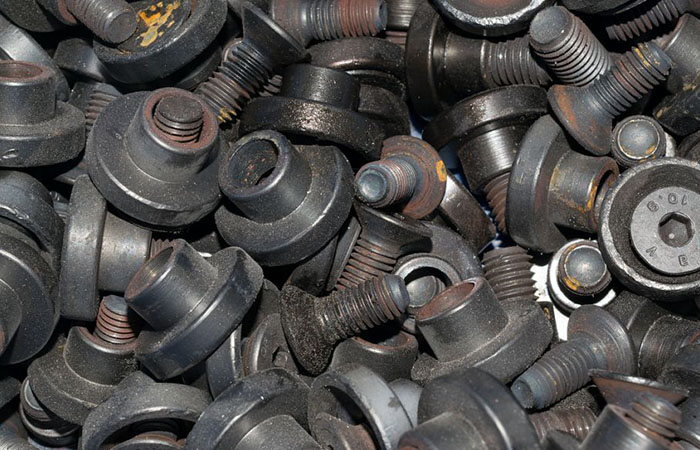The introduction of different rubber hoses for automotive parts is organized here for you!
Publishdate:2024-01-31 Source: Views:463

Rubber hose products can be divided into fuel hose, brake hose, radiator hose, air conditioning hose, power steering hose, turbocharged hose, etc., which are mostly distributed in the three major assembly systems of the automotive chassis system, engine system, and body system, playing a role in oil, gas, water supply, control, power transmission, cooling, heating, etc. According to statistics, the usage of automotive rubber hoses in China reached over 400 million meters in 2015. It is predicted that the market size of rubber hoses will exceed 600 million meters and the total value will exceed 24 billion yuan in 2017.
Fuel hose, as a high-value rubber hose in automotive hoses. In the automotive fuel system, by connecting components such as the fuel tank, charcoal canister, fuel pump, and crankcase, on the one hand, fuel is transmitted to the engine for combustion and work, and on the other hand, evaporated oil and gas, unburned fuel, and fuel exhaust gases are transmitted to the fuel purification system for combustion or emissions. With the increasingly stringent fuel consumption regulations, the traditional three-layer structure of fuel hose materials is constantly being replaced by new material skills. For example, automotive rubber parts require inner layer rubber with low permeability, which is gradually transitioning from nitrile rubber (NBR) to composite rubber layers of fluororubber (FKM) and fluororesin (THV) special rubbers; The outer layer of rubber with ozone resistance, oil resistance, and wear resistance is also transformed from chloroprene rubber (CR) or chlorosulfonated polyethylene rubber (CSM) to ethylene acrylate rubber (AEM), chlorosulfonated polyethylene (CSM), and chloroether rubber (ECO); Composite hoses with 4-layer, 5-layer, and even multi-layer structures are constantly emerging. However, the emergence of multi-layer structured rubber hoses has increased their high and strong wear resistance, but poor interlayer adhesion has brought new challenges to the fuel industry.
Brake hose, as an irreplaceable part of the automotive braking system, is mainly used to transmit braking force to the brake shoes or calipers, ensuring continuous work of the braking force. According to the different types of brake fluids, brake hoses can be divided into petroleum based and non petroleum based. With the increasing requirements for braking performance and energy-saving environmental protection regulations, as well as the development and application of new materials, the inner layer of brake hoses has been mostly replaced by ethylene propylene diene monomer (EPDM) instead of styrene butadiene rubber (SBR). The inner layer of brake hoses also has more choices such as natural rubber (NR), nitrile rubber (NBR), chloroprene rubber (CR), ethylene propylene diene monomer (EPDM), special rubber, etc. Usually, natural rubber (NR), chloroprene rubber (CR), and ethylene propylene diene monomer (EPDM) can be selected as the outer layer, while nitrile rubber (NBR) and ethylene propylene diene monomer (EPDM) can be selected as the corresponding inner layer. The middle layer is made of materials such as cotton thread, polyester, synthetic silk, and aramid to increase strength.

Rubber hose products can be divided into fuel hose, brake hose, radiator hose, air conditioning hose, power steering hose, turbocharged hose, etc., which are mostly distributed in the three major assembly systems of the automotive chassis system, engine system, and body system, playing a role in oil, gas, water supply, control, power transmission, cooling, heating, etc. According to statistics, the usage of automotive rubber hoses in China reached over 400 million meters in 2015. It is predicted that the market size of rubber hoses will exceed 600 million meters and the total value will exceed 24 billion yuan in 2017.
Fuel hose, as a high-value rubber hose in automotive hoses. In the automotive fuel system, by connecting components such as the fuel tank, charcoal canister, fuel pump, and crankcase, on the one hand, fuel is transmitted to the engine for combustion and work, and on the other hand, evaporated oil and gas, unburned fuel, and fuel exhaust gases are transmitted to the fuel purification system for combustion or emissions. With the increasingly stringent fuel consumption regulations, the traditional three-layer structure of fuel hose materials is constantly being replaced by new material skills. For example, automotive rubber parts require inner layer rubber with low permeability, which is gradually transitioning from nitrile rubber (NBR) to composite rubber layers of fluororubber (FKM) and fluororesin (THV) special rubbers; The outer layer of rubber with ozone resistance, oil resistance, and wear resistance is also transformed from chloroprene rubber (CR) or chlorosulfonated polyethylene rubber (CSM) to ethylene acrylate rubber (AEM), chlorosulfonated polyethylene (CSM), and chloroether rubber (ECO); Composite hoses with 4-layer, 5-layer, and even multi-layer structures are constantly emerging. However, the emergence of multi-layer structured rubber hoses has increased their high and strong wear resistance, but poor interlayer adhesion has brought new challenges to the fuel industry.
Brake hose, as an irreplaceable part of the automotive braking system, is mainly used to transmit braking force to the brake shoes or calipers, ensuring continuous work of the braking force. According to the different types of brake fluids, brake hoses can be divided into petroleum based and non petroleum based. With the increasing requirements for braking performance and energy-saving environmental protection regulations, as well as the development and application of new materials, the inner layer of brake hoses has been mostly replaced by ethylene propylene diene monomer (EPDM) instead of styrene butadiene rubber (SBR). The inner layer of brake hoses also has more choices such as natural rubber (NR), nitrile rubber (NBR), chloroprene rubber (CR), ethylene propylene diene monomer (EPDM), special rubber, etc. Usually, natural rubber (NR), chloroprene rubber (CR), and ethylene propylene diene monomer (EPDM) can be selected as the outer layer, while nitrile rubber (NBR) and ethylene propylene diene monomer (EPDM) can be selected as the corresponding inner layer. The middle layer is made of materials such as cotton thread, polyester, synthetic silk, and aramid to increase strength.



